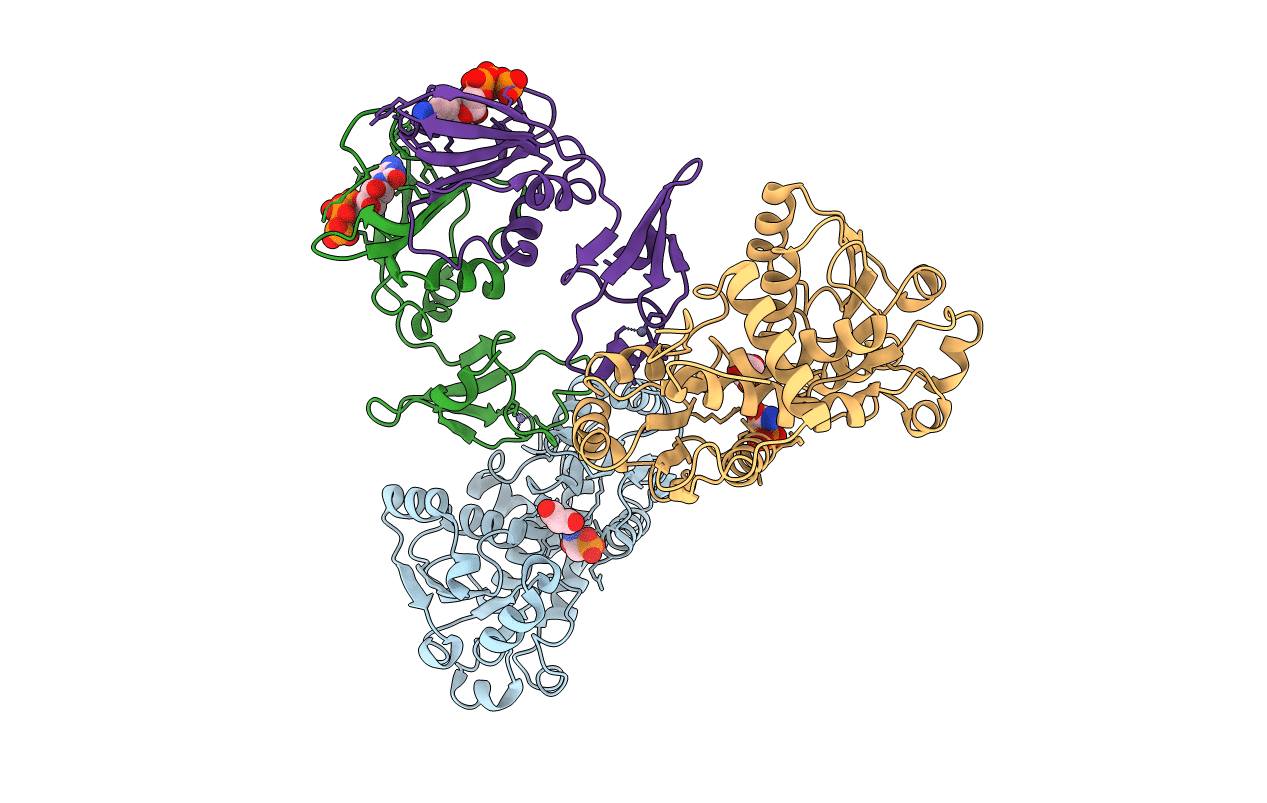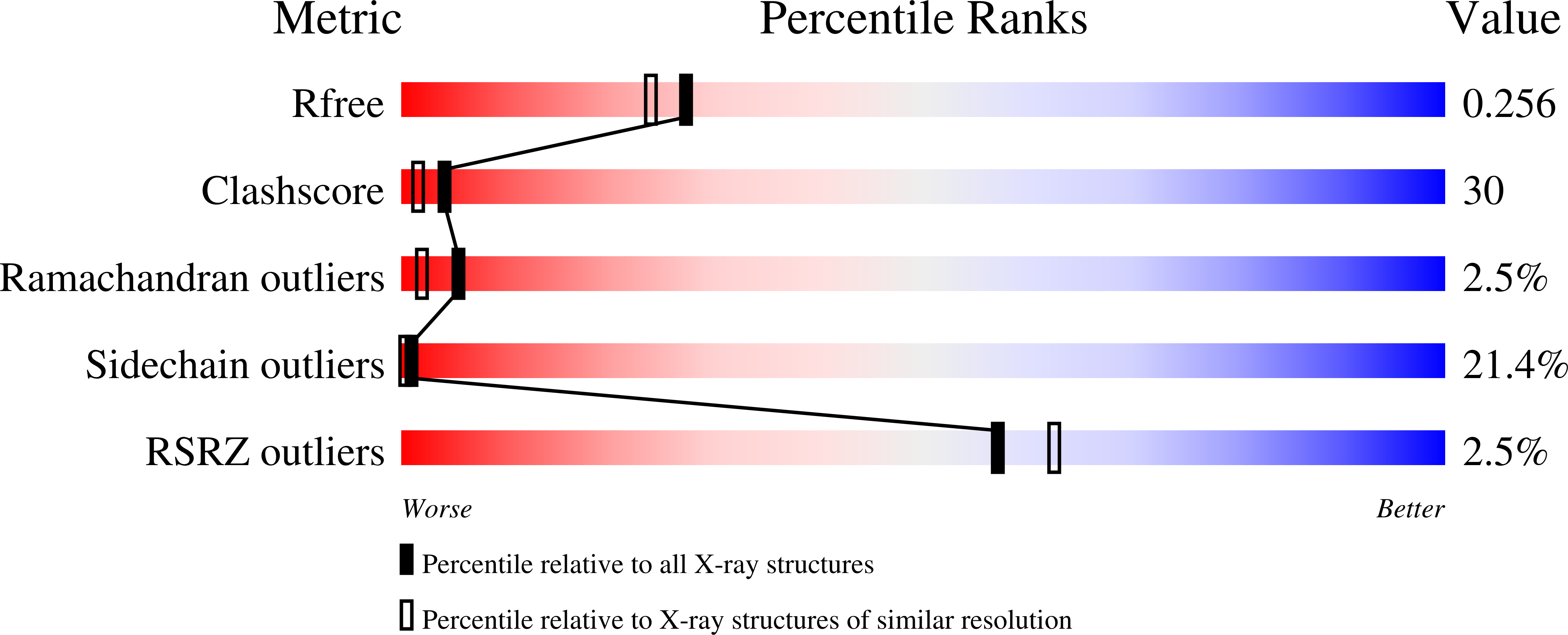
Deposition Date
2004-06-24
Release Date
2004-07-20
Last Version Date
2024-10-30
Entry Detail
PDB ID:
1TUG
Keywords:
Title:
Aspartate Transcarbamoylase Catalytic Chain Mutant E50A Complex with Phosphonoacetamide, Malonate, and Cytidine-5-Prime-Triphosphate (CTP)
Biological Source:
Source Organism:
Escherichia coli (Taxon ID: 562)
Host Organism:
Method Details:
Experimental Method:
Resolution:
2.10 Å
R-Value Free:
0.27
R-Value Observed:
0.21
Space Group:
P 3 2 1


